Issue No.17 / November 1-15,2015
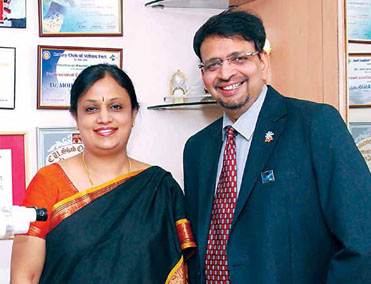
Dr Mohan rajan and Dr Sujatha Mohan ,the husband and wife team behind Rajan Eye Care Hospital conduct hundreds of eye surgeries every month espousing Mother Teresa’s credo of humanism, care and compassion. They complement each other at work, through their approach, skills and specialisation, and believe it is God’s planning that they are where they are, doing what they do, using their skills to help people see better.Corporate Citizen meets the heart-warming, affable and down-to-earth couple who have empowered hundreds of thousands of people to regain lost or impaired vision
DR.Mohan Rajan has this quotation of Mother Teresa highlighted in his biodata, explaining the philosophy of his profession: “Craze for money and passion for materialism has taken the widely rampant free market economy to its heights. Love and compassion in the society is eroding slowly but surely. Humanism has taken a back seat and concern for fellow human beings is gradually disappearing. Love and care for humanity is missing. Amidst this despicable and chaotic social behaviour, we at Rajan Eye Care want to bring in a transformation. I want all our employees to embrace the spirit of Mother Teresa. ” - Dr Mohan Rajan.
Meet Dr Mohan, M.B.B.S., D.O., FMRF., MNAMS., M.Ch, FACS and FRCS Diplomate in National Board (Dip. NB. Ophth.), Vitreo Retinal Fellow, Sankara Nethralaya, Chairman and Medical Director of Rajan Eye Care Hospital. He is an Ophthalmic Surgeon with equal expertise in both Anterior and Posterior segment surgeries. He graduated from Madras Medical College and had his basic training and fellowship in Vitreous and Retina under Dr S.S. Badrinath at the renowned Sankara Nethralaya. Dr. Mohan Rajan has performed more than one lakh cataract and IOL implant surgeries and is a specialist in Phacoemulsification and Foldable IOL’s and Vitreous Surgeries.
His dynamic wife, Dr Sujatha Mohan, M.B.B.S., D.O., M.Ch, is a Phaco Refractive Surgeon, Specialist in External Eye Disease and Cornea, is the Associate Medical Director of Rajan Eye Care Hospital and Director of Rotary Rajan Eye Bank.
Together, they have empowered hundreds and thousands of people with vision, lost due to various problems, infections and ailments of the eye.
While Dr Sujatha’s skill in eye-surgery is obvious, she also has a keen eye for beauty. She had a big role to play in their newly built ultra-modern home in Chennai. Its beautiful and the tasteful interiors are single-handedly created by Dr Sujatha.
When they constructed their home in Chennai, Sujatha was very sure she wanted a swing and Dr Mohan wanted a well-equipped bar -- although he does not drink (he only sips wine) -- he loves to have company and socialise.
all in the family! three generations of doctors pose here. there are at least 50 more from Dr sujatha’s paternal side
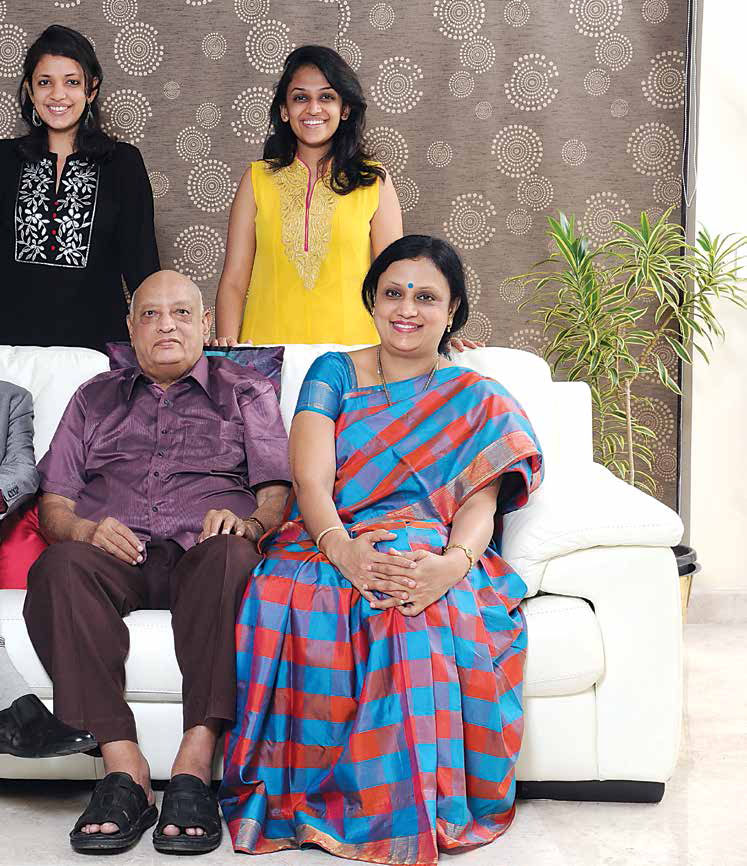
Hence, Dr Mohan plotted a conspiracy. However, it fell flat, as the new entrant Sujatha was brighter than he had imagined. Reminisces Sujatha, “Both of us were post-graduate students and he was one year senior to me in the PG course. When you join the Sankara Nethralaya, you have to first practise with a model eye, made of plastic, which has to be seen through an instrument called Indirect Ophthalmoscope. Before you see a real patient, practising with the model eye makes it easier when you see an actual patient. Normally, it takes several days to get trained on that. However, I just picked it up in a few hours, on the first day itself.”’
Dr Mohan was not aware of this. That evening, he called the person who was in charge of putting the model eye back in its place at the end of the day and told him that the next time she asked for it, he should ask her to contact him (Dr Mohan). However, he did not get such an opportunity as the next time he saw Dr Sujatha she was already seeing a real life patient at the clinic. That, though, did not stop him from pursuing her.
Nearly three decades later, Dr Mohan jocularly says (he has a great sense of humour), “We saw eye-to-eye then but after marriage, seem to have lost it. Ever since, we have not seen eye-to-eye.” Which is not true, going by their cordial relationship, the beautiful home they have built -- with Sujatha the architect behind it -- and their two lovely daughters, who too are pursuing medicine. However, they both accuse each other of having fallen in love before the other. Says Dr Mohan, “How we fell in love is a million dollar question. In my opinion she fell in love with me first. She goes and tells everybody I proposed to her, but actually both of us were in love with each other.’’ Dr Sujatha contradicts, `”When we had visited our family friend, Mr Ravichandran, an optometrist, to distribute our marriage invitation , told me that even before I knew it, Mohan was in love with me.’’
So, what is it that attracted her to Dr Mohan? Says Sujatha, “What I liked about him was that he looked very smart and he was quite brainy as he seemed to know all the answers in Ophthalmology, which was because his father was a professor in that subject. I would say that he was not great looking, as he was bearded and thin but his grey cells and his sense of humour were what attracted me towards him. Also, he is an ambitious person, with the passion to succeed. That’s the kind of person I wanted to be with. The downside is his unending energy level which is really tough to cope with. He is continuously having eye camp programmes and he thrives on them. Most people would get tired after a couple of programmes, but they actually energise him to do more.
States Dr Mohan, “I always tell my students that if you enjoy work, then you won’t mind working from morning to night. I have been working from morning 6 am to night 9 pm, that is,15 hours a day, for the past 25 years and still raring to go.”’
So, what is it that attracted Dr Mohan to Dr Sujatha, “I loved her beauty, tinged with a bit of arrogance.”
Did they date? Says Dr Sujatha, “The society we lived in was very conservative. We did go out on dates, but not much. May be we went out for dinner and a couple of movies. By which time Mohan’s brother came down from the US, so he told him about me and he arranged a meeting between our parents. The meeting was fixed on 26th January, 1987, and the date fixed for the wedding was 19th August.’’ Adds Mohan chirpily, “On Republic Day, the marriage was fixed and on neaby to Independence Day I lost my independence, but I must admit that I am happily imprisoned.’’
i always tell my students that if you enjoy work, then you won’t mind working from morning to night. i have been working from 6 am to 9 pm, almost 15 hours a day, for the past 25 years-Dr Mohan Rajan
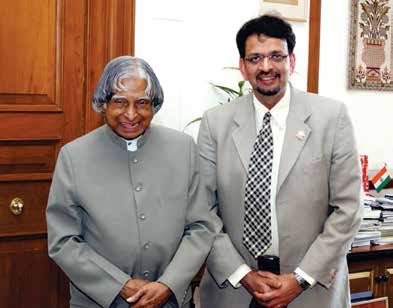
Rajan too has a similar background. He states, “My grandfather was a doctor in Kumbakonam (city of over 220 temples) near Tanjavur. My father started his primary health centre practice there and then migrated to Chennai in the 1950s. Thereafter he became an ophthalmologist, after which he became Professor of Ophthalmology, then he became the superintendent of the Government Eye Hospital, which is the second oldest eye hospital in the world. He retired in 1983. My grandfather and father were actually motivating all four of us siblings to become doctors. One of my sisters is a Radiologist in New York; my other sister wanted to pursue medicine but didn’t get enough marks, but she is our hospital administrator now. My brother, who is a software engineer in the USA, refused to obey my father; he had to run away from home to do his B. Tech. He became the best outgoing student from one of the top colleges in Chennai and then went off to USA, but my father did not support him for his education, as he did not choose the medical profession.
What about those initial feelings of having to do practicals in human anatomy? How did they cope up with that? States Dr Sujatha, “Already 20 people have graduated from medicine in our family and in my childhood, the talk constantly revolved around medicines, medical college experiences and incidents in the wards. So I knew what happened in an anatomy class and so never had any kind of fear when I joined medical college. I never had an aversion of looking at a dead body or touching a patient. I have seen my father do it, my grandfather do it, it’s been part of my life.
Adds Dr Mohan, “The same goes for me as well. My sister was 10 years senior to me. My father used to practice in the ground floor of the building where we lived. Our living room used to be converted into the patients’ waiting room. I used to assist my father in cataract surgery at the age of 12. We used to have an operation theatre on the first floor, and every Sunday I used to assist my father there. So it was all ingrained in us.
No wonder then, that both their daughters, Sashwanthi and Madhuwanthi are doing medicine. Says Dr Sujatha, “I told my second daughter not to take up medicine and to do something else as she is very good at drawing, so perhaps she could take up architecture. She dilly-dallied for some time and then after the results were out, she said I have to be a doctor, I will not understand anything else.”

In the initial 10 years of marriage they were not as busy at work, but, says Dr Sujatha, “All the time we have been working together from the same hospital, since 1995. We started practising around 1989. I had my first child in 1991 and the second in 1993, so there was a break in my practice. Once I resumed in 1995, the construction of the hospital was completed and we moved together to this workplace.”
Dr Mohan adds, “I think God planned this well for us. In 1987 we got married, but I was very apprehensive because I was earning Rs.1500 as stipend and she was earning Rs.750 as a postgraduate. We were living in a joint family, with my father, who had already retired from government service, and was supporting us. His post-retirement practice wasn’t too good either. That is why we decided not to have children for the first four years of marriage. We thought, let’s stabilise economically first. I say God planned everything because if we had had our second daughter a few years later, Sujatha would not have been able to resume practice so soon. In 1993 we started the construction of the hospital and by 1995 we completed it. By that time she came in full steam and practiced with me.
S:Then we moved out of our father-in-law’s house to a house right next door to the hospital. The advantage of moving in there was that, being close to the hospital, I could go and check on my daughters several times a day. It gave me a lot of confidence because I was practising full time; I used to start by 9 am and finish by 8 pm.
S:In a sense, we are not with each other 24x7. Some days I don’t see him in the hospital at all, except probably in the operation theatre. I come to the OT at 10:30 am, Mohan starts a bit early. I see my patients in the morning for one hour and then I come to the theatre. That is the time we meet for about ten minutes. Sometimes we operate simultaneously, but I am busy with my surgery and he with his and then he goes to his OP. I finish my surgery around 2 pm. Most of the times we are very busy; we hardly have time to speak to each other. His patients are different from mine. The common thing is that both of us do cataract surgery; otherwise, he does retina work, I do cornea and refractive surgery.
M:Again God planned that for us. She takes care of the front part of the eye, I take care of the back part, so we complement each other. That’s why we are successful and have an edge over the others.
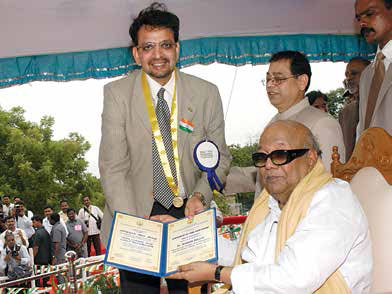
M:I believe in what is called better man-management and also the lack of management. She believes in micro-management and that’s a problem. In any organisation, if you go to the minute level, you are bound to find some faults; nobody is perfect. What I tell her is to take 10 points of a particular individual and make sure that six or seven points are okay – ignore the two or three negative points.
SMagnanimity is excellent, but it should not encourage indiscipline. Mohan is lenient to the extent that it goes into indiscipline. Unless you tighten the reins, you can’t run an organisation. Probably we balance each other. We can’t have both of us being bad cops.
M:I am not denying that, but that is where we have a difference of opinion. For example, if somebody makes a mistake, she will call and fire him/her. I call that person, tell him that he is an extremely good worker and pat him on the back, and at the same time, give the message that this would be the last time he should make the mistake. So there are many ways you can skin the cat.
Sujatha disagrees. Micro-management, she says, is the nerve of any hospital administration.
Both of them together conduct about 20 cataract surgeries every day, and Sujatha conducts over 200 cornea and laser operations as well as glaucoma surgery in a month. Apart from this, they conduct a huge number of eye camps.
S:We have completed 20 years of ophthalmology. The diseases are the same but the management and diagnostics have improved so much that most of the diseases which we thought were not treatable, are curable. It has come to a stage where preventive medicine plays a major role. When I was a postgraduate, we were doing cataract surgeries and giving thick glasses. Then we used to put lens in the eye and stitch the eye. Now we have come to a stage where we remove the cataract through a very small opening (1.8 mm) and put a foldable lens inside. So this is how technology has helped, facilitating the patient to walk in and out of the operation theatre within a few hours.
M:When we did our post-graduation and started practice, the main problem in this country was cataract. But today the main problem is not cataract. There are other problems like glaucoma, diabetic retinopathy and macular degeneration. People who have had diabetes for more than 10 years can have problems in their retina. In India, 80-100 million people are diabetic. Another aspect is longevity. The lifespan of an average Indian is 72 years now, which was about 58-60 years 20 years back. So the longer they live, there is a problem of the retina called macular degeneration, which could never be treated earlier. We would tell the patient, you have to live with this problem forever. Now we give an injection in the eyes to cure it -- technology has changed so much. There is actually a 360 degree change in technology. Whatever we learnt as postgraduates, we have to unlearn now. That is why we keep having conferences every week in order to update ourselves
MMy father had only one condition for me when we started this hospital in 1995. He gave the land to me which is adjacent to the house and said he would allow me to start a hospital, only if I promise to give free eye treatment to poor patients. In fact, he wanted me to join government service, where I worked for two years. We started a community wing for ophthalmology which is called Chennai Vishwam Charitable Trust, through which we have done over one lakh surgeries so far. We were the first ones in 1996 to start applying technology in eye camp treatments. We had covered a radius of up to 150 kilometres around Chennai and even made some of the areas cataract free zones. In 1996 we both would go to camp as a team.
S:Since 2003 we are running a postgraduate programme, so the postgraduates too attend eye camps.
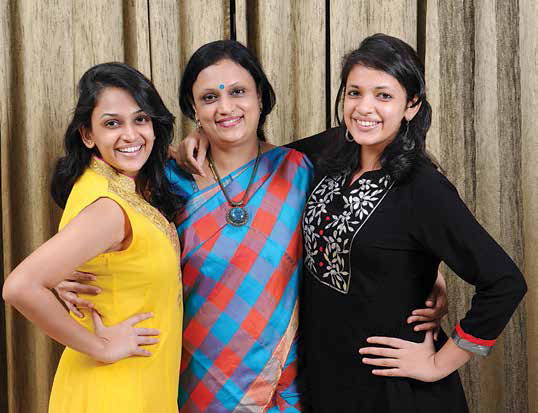
The story does not stop there. This boy grew up and after about 20 years came back to me (in 1992/93) by which time he had lost one eye because of an injury. The other eye, through which he could see well, developed retinal detachment. He asked me if I remembered helping him earlier during the school days. He was only 25 years old at that time, when I operated on his retina. Even today he still has 80% vision in that eye. He got married and had children and works in a government office. Even now he comes to me regularly for check-up. He says instead of keeping photographs of gods, he has my photograph in his house. This incident changed my entire outlook on life. Now I am the trustee of the same school for the last 14 years.
S:About a year back one of our close friends brought to me a six month old child from a village, who was bilaterally blind since birth. We diagnosed it as hereditary stromal dystrophy – meaning, since birth the cornea, which normally should be transparent had become completely opaque. The child was not able to see anything. We operated on one eye and you should have seen the difference after that. He now recognizes everything and looks at his mother, which he was not able to do before. Even now when he comes, he can smile. After six months we operated the other eye too; he is doing extremely well for the past one year. He is now one and a half years old.
M:Sujatha has done some tremendous surgeries. There was one lady, who, because of some quarrel in her family, had acid thrown on her face by her boyfriend. Her entire face got disfigured and the entire cornea was damaged. She did an eye surgery for that lady.
S:She would cover her face with a scarf when she came to meet me. One eye was completely lost, and she could partially see with her other eye. We did what is called a stem cell transplant. We transplanted stem cells from a cadaver, so her cornea was retained and the ocular surface came back. Now she has around 60 percent vision.
Another interesting case was about a patient who was blind for the last 45 years. He had gone to all the top institutes for medical prognosis. He was told that they could not touch his eyes, they would not come back, they could not be operated, and so on. I said the same, but Mohan said let us try and see. He was put on the list for an eye donation. Then Mohan’s 80 year old uncle passed away, and his eyes were so good we decided to do the transplant. We transplanted the eyes and this patient started seeing. He had 70 percent vision in one eye. He has at least 70 relatives, now he can see them. He had never seen them earlier, but had only heard their voices. Normally we don’t tell who donates eyes to whom, but because we knew it was Mohan’s uncle, we got both the families together...it was a very emotional moment. Mohan’s aunt wanted to see the recipient of the eyes. When he passed away two to three years ago his son came and told me that because of my efforts his father could see the world in his last ten years of life.
Marriage is a lot of give and take. For example,i am very ambitious, very aggressive in many things. she too was adamant but has mellowed down.Without her strength though,i wouldn’t have achieved so much-Dr Mohan Rajan
M:These incidents actually motivate us. We feel that God has chosen us to become eye doctors. Eye doctors are even greater because when they open the eye of a patient the day after the surgery, the patient is able to see. They fall at your feet when they regain sight. Two weeks back, before I went to Malaysia, there was a lady who was nine months pregnant. She was supposed to deliver in another two weeks. She came and said to me that for the past three days she was not able to see anything with her right eye. Normally at the ninth month of pregnancy you look for toxaemia, because blood pressure can affect the eye. I checked everything, but I was not able to see or find anything. The next day both of us were travelling to Malaysia and I asked my assistant to ask the patient to come for an MRI scan and then give me a call. When we did the MRI we diagnosed that there was a huge tumour under her right optic nerve. She had no pain or headache, and had just come to us complaining about a drop in vision. The problem was, what to do next. Then I said to her to immediately deliver the child, because it was almost due. We got the child delivered first and after four or five days, got the surgery performed to remove the tumour. Top neurosurgeon, Dr. Sureshbabu did the surgery and the child and mother are doing well.
M:The eye is the window to the brain, so whatever is happening in the brain, you can see in the eye.

M:We have a big van called Netravahana, which is supported by Cognizant Foundation and Vijay Amritraj Foundation. Vijay Amritraj, the tennis star is the brand ambassador for our eye bank.
S:We bring them here to operate, give them food and drop them back. That is the part of our corporate social responsibility and we get people to donate.
M:First, these fresh doctors are all coming from private medical colleges, where they pay huge capitation fees of one crore rupees or more. So when they finish their medicine or speciality course, their main aim is to get the money back. Secondly, over a period of time, I feel people have become more self-centred and selfish, especially the younger generation. They don’t have any compassion.
SLooking at the flip side, if Mohan asks a patient to undergo an MRI and if the diagnosis turns out normal, what would the patient say? ‘See, the doctor has ordered an unnecessary investigation.’ Now, with advancement in technology, we need to investigate. It doesn’t mean that everything has to turn out positive, 50% will be negative. That doesn’t mean that the doctors have ordered unnecessary investigations.
M:Once you become a patient, it is actually a bond between the patient and the doctor. If you see my father-in-law, even today, they regard him as the God of that place. It is a small town. People go from Chennai to meet him, because they believe he has a healing touch. Today, if you touch a patient and talk, he may complain that the doctor has manhandled. Patients too have lost trust.
S:Also, today, a patient may come in with half-baked knowledge got from the internet and then ask the doctor very irritating questions. That also makes a difference to the doctor. It works both ways. I am not saying there are no doctors who practice unethically. The fault can also be with the patient. Patients also have to understand that we are not Gods. There are so many incidences in which doctors have been beaten up and that’s not fair. That is why to safeguard themselves, doctors have become more careful and ask for more investigations.
S:We try to go on holidays. Mohan likes to play golf.
M:I play a lot of golf. I used to be a very good cricketer too. I have captained the Madras Medical College team.. Whenever she has time, she reads. She writes books as well.
S:I have written a book of short stories. Now I write poetry. I like to hang out with my daughters. I like to watch cookery shows, I love to cook. Mohan loves my cooking, but he is not a great foodie. I cook a lot of Italian dishes. I used to make pasta regularly. Nowadays, I cook only once in a while.
Sashwanthi: They are both really good at managing the hospital as well as home. My dad always stays back at the hospital and my mother comes home. A lot of people think they don’t spend enough time with us because they work so much, but they are very good at balancing both.
Madhuwanthi: Mom is very easy to talk to, I tell her everything. Dad is like a lenient parent, so she is strict and he is the fun parent. He will never say no. My mom will say no. Anything important, I will tell my mom first. She is easier to talk to.
S:They are girls, so they connect with me better. Occasionally, when we go on holidays, we have time to spend together.
By Vinita Desh Mukh